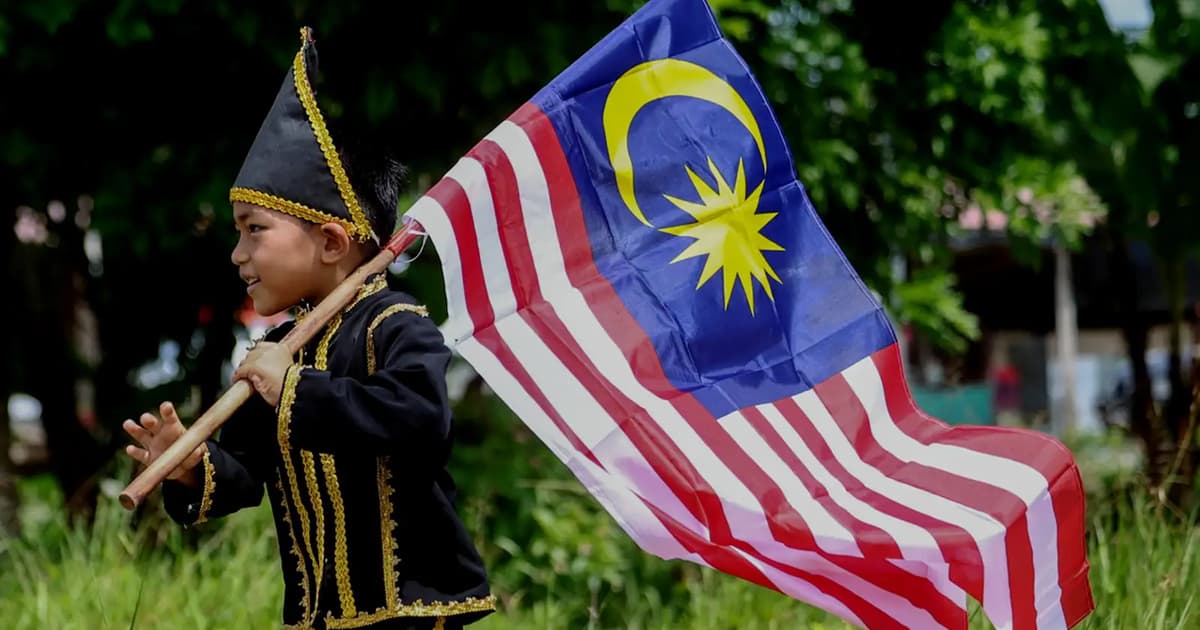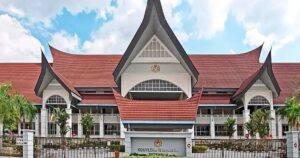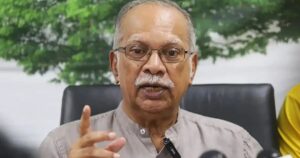
Sixty-two years ago, the Jalur Gemilang – with its familiar stripes, crescent and star as we know it today – was officially adopted as the nation’s banner.
Created to symbolise the unification of Malaya, Sabah, Sarawak and Singapore, the flag remained unchanged even after Singapore’s expulsion from Malaysia in 1965.
Yet in recent years, the Jalur Gemilang has found itself at the centre of controversy, its misuse sparking outrage and raising questions about national unity.
In April 2025, two Chinese-language newspapers – Sin Chew Daily and Kwong Wah Yit Poh – published incomplete versions of the Jalur Gemilang without the crescent and star, sparking criticism from government leaders and royalty.
Barely months later, Umno Youth chief Dr Akmal Saleh posted a video on Aug 11, demanding the Attorney-General’s Chambers act against a man accused of flying the flag upside down at a shop in Penang.
Akmal warned he would personally “teach the apek” how to hang the flag correctly, remarks that led to him being charged under Section 505(b) of the Penal Code for statements likely to cause public fear or alarm.
While such incidents highlight how sensitive the issue of depicting the flag can be, few now know the story of the banner itself, and fewer the quiet figure behind its design and creation.
A nation in need of a flag and the ones that never flew
Formed in 1948 after the collapse of the Malayan Union, the Federation of Malaya needed its own emblem. A year later, the Federal Legislative Council, the forerunner of Parliament, launched a competition to design a national flag.
The rules were simple: no more than four colours – preferably yellow, red, white and blue – and draw on motifs such as the keris, tiger or crescent moon.
The contest drew 373 entries, later narrowed down to three finalists. One featured two crossed red kerises surrounded by 11 stars.
Another showed the stars in two concentric rings: an outer ring of five for the unfederated Malay states, and an inner ring of six for the federated states and Straits Settlements.

The third design stood apart. Submitted by Mohamed Hamzah, a young architect from Johor, it carried 11 alternating blue-and-white stripes with a red canton, and within it a yellow crescent and star to symbolise Islam and the Malay rulers.
An unofficial fourth design submitted by Mohamed replaced the crescent and star in the canton with two crossed keris.
According to a Malay Mail poll, his original design secured 42% of the votes, while his variant drew 27%. About a quarter of readers still preferred keeping the Union Jack on the flag.
Although Mohamed’s entry won the public vote, it still went through fine-tuning by the Conference of Rulers and Federal Legislative Council. Onn Jaafar, then Umno president, was among those who suggested adjustments to better reflect Malaya’s identity.
The stripes, first blue and white, were changed to red and white to symbolise courage and purity while echoing both the state colours and Union Jack. The canton, originally red, became dark blue to represent Malayan unity.
Inspired by Johor’s flag and first drawn in white, the crescent and star were recoloured yellow, the royal colour. The star itself was expanded from five to eleven points, each representing one of the federation’s states.
With these changes, the final design was approved in February 1950. On April 19, the Federal Legislative Council adopted it, and a month later King George VI gave his assent. The new flag was raised officially on May 26, 1950, at the palace of the sultan of Selangor.
Seven years later, at the stroke of midnight on August 31, 1957, the Union Jack was lowered at Kuala Lumpur’s Merdeka Square, and a new flag rose in its place, greeted by the jubilant shouts of “Merdeka!”
From Malaya to Malaysia
The flag went through another evolution on Sept 16, 1963, when Malaya expanded to form Malaysia with the inclusion of Sabah, Sarawak and Singapore. Three stripes were added, and the star was given 14 points to represent the new partners.
When Singapore left the union two years later, the design remained unchanged. Instead, the official interpretation shifted. The 14th stripe and star point came to represent the federal government and territories.
Flag of Malaysia
The symbolism made even more sense when Kuala Lumpur was carved out as a federal territory in 1974, as the extra stripe could represent the union of federal territories with the states.
When Labuan and Putrajaya became federal territories in 1984 and 2001, they too were placed under the extra stripe and star point.
All through these changes, the core design and colors of the flag remained constant: red for bravery, white for purity, blue for unity, yellow for royal sovereignty, the crescent for Islam and the star for Malaysian harmony.
For four decades, the flag was simply known as either Bendera Malaysia or the Federal Flag. It was not until 1997 that a naming competition was held – albeit limited to invited participants.
Among the names proposed were “Seri Setia Negara”, “Mega Perkasa” and “Tuah Nusa”. In the end, then prime minister Dr Mahathir Mohamad chose Jalur Gemilang to capture the flag’s bold red and white stripes and the aspirational spirit they represent.
At the same time, a new anthem, Jalur Gemilang, was introduced. Penned by patriotic songwriter Suhaimi Zain – better known as Pak Ngah – it replaced the Benderaku composed by Tony Fonseka.
The man behind the flag
For almost 40 years, few knew who had designed the national flag. Mohamed, then 29, was working as a government architect in Johor when he submitted his winning entry in 1949.
Born in Singapore in 1918, he grew up in Johor Bahru, the second of 10 children in a modest family. Mohamed studied at English College Johore Bahru and even took a correspondence course in art from London.
By the late 1930s, he had joined the public works department, contributing to government buildings and royal insignia in Johor.
While his concept became the foundation of the Malayan flag, Mohamed never sought the spotlight. He returned to his desk job after the competition and never publicly mentioned his role.
For decades, Malaysians knew little about the man who had given them the Jalur Gemilang. It was only after his death in 1993 that his family revealed his story.
Since then, historians and museums have highlighted Hamzah’s contribution, belatedly honouring the quiet architect from Johor who designed the flag that continues to unite the nation.
His story serves as a reminder that patriotism can be humbling, creating something enduring and letting it speak for itself.






